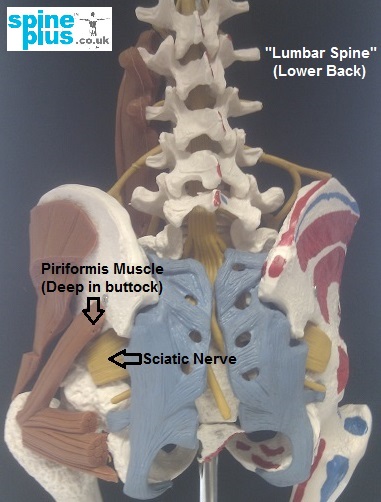Piriformis Syndrome is the name given to a neuromuscular disorder that results in chronic pain in the legs, buttocks, and / or in the feet. In around 20% of people the sciatic nerve passes through the middle of the piriformis muscle and in the other 80% the nerve passes very close to it. This condition occurs when the piriformis muscle irritates or causes compression of the sciatic nerve.
 Diagnosing Piriformis Syndrome
Diagnosing Piriformis Syndrome
Since the sciatic nerve can be compressed due to various conditions, such as a herniated disc, lumbar muscle strain, spinal stenosis and facet arthropathy, these conditions often co-exist and may cause the piriformis to tighten. Diagnosis of isolated piriformis syndrome can therefore be challenging. Various diagnostic procedures, such as CT scans, MRI and EMG, are used to exclude the possibility of other causes that can result in the compression of the sciatic nerve.
Symptoms that could indicate the presence of the disorder include numbness in the buttocks, pain while ascending or descending stairs, tingling in the legs, and pain while sitting for long periods. The patient’s history of pain and symptoms are taken into account, along with a physical exam to check for a contracted piriformis muscle. The patient is made to undergo various movements with their legs and hips, which cause compression of the piriformis muscle. If these movements result in pain, the diagnosis of piriformis syndrome can be made.
Treating Piriformis Syndrome
Piriformis Syndrome can be treated in the following ways:
- Stretching the piriformis muscle 3 to 4 times a day.
- Deep Massage and dry needling into the muscle can be very effective by promoting blood flow, releasing chronic muscle tension and stretching taut muscle fibres.
- Strengthening and muscle balancing exercises: Various exercises that help to strength the core as well as the piriformis and other muscles around the hip can be done to treat the syndrome.
- Avoiding certain actions. If particular activities, such as climbing stairs or running, result in excessive pain, these should be avoided until the pain is under control or has been effectively treated.
